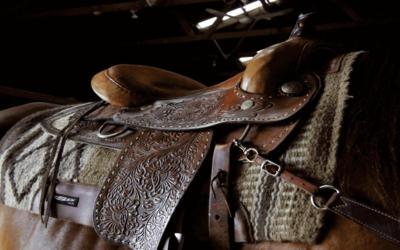When it comes to buying a canoe, there are also plenty of problems to address. Which engine can you use? What kind of boat are you looking for? What size boat do you require? One of the famous debates in boating is whether to build a hull out of aluminum or fiberglass. Everyone has a different perspective on what is better.
However, the fact is that each has its own set of advantages. What’s best for you relies on what you’ll do with the boat and what conditions are most important to you. This article will explain why each substance is superior in some areas. As a result, you’ll be able to make an educated decision and then get the perfect boat for you.
Each canoe has negative and positive influences on the materials used in its construction, and a person should choose the canoe that best meets their needs! When it comes to deciding between aluminum and fiberglass, it all comes down to what you want to do with your ships. If you’re a seasoned boater, the fiberglass canoe is the way to go. However, if you are new to boating, you can consult a professional to determine which boat is best for you; however, the aluminum canoe is typically the best choice.
Aluminum Vs. Fiberglass Canoe: Which One You Must Choose?
Are you excited about going on a canoe trip but worried about which material you should opt for? Have a glance and decide which one that is suit your needs.
Fiberglass Canoes in Details
It’s a broad term that refers to boats made of plastic resin reinforced with glass fiber and other products. Tiny strands of chopped yarn and synthetic resin are used to make these vessels. After that, the solution is sprayed into a mold and glued together to form a sheeted substance.
For its speed, weight, strength, and design, fiberglass canoe has become more and more common, particularly in the last few decades.
Fiberglass Advantages
Performance
Fiberglass boats are highly sturdy, lighter than aluminum, and more rigid than aluminum boats. They’re easier to form for a cleaner finished product. They’re great for short journeys.
Weight
Since they are most commonly made out of fibers and fibers combined and left to form the required shape in a mold, fiberglass canoes are typically lightweight. This is a primary plus side whether people are canoeing by themself, or if you’re a tourist. It is much easier pushing a lighter canoe around than a heavy one, so this is one of the most significant benefits of this canoe model.
Durability
While lightweight, the fiberglass canoe is highly resilient, making it perfect for almost any canoeing-related operation. The hull layer most frequently has a coating of a slick gel, which equates to the canoe knocks and scratches resistance
Speed of Movement
As we’ve discussed above, fiberglass canoes are built using molds, which allows the producer’s capacity and a chance to modify anything to get the most potent boat possible. This mainly involves the canoe speed, so with every improvement, the fiberglass canoe appears to be more robust and more durable, with better usability when required.
Performance Hulls
This explains that many fiberglass canoes have a straight bow and stern, while the entrance line is often baseman and brings security in a time of waves. Keep in mind that one of the most important differences between canoes and kayaks is that canoes are more comfort for a long trips.
We just said that fiberglass canoes are produced using a mold, so you can build the hill any way you like. This indicates that their general skill can be significantly enhanced, mainly if the canoe is custom-made with a particular activity in mind. To put it simply, you might build a fiberglass canoe for any use, from white-water canoeing to simple and soothing canoeing.
More Advantages
Light in weight
Long-lasting
A variety of hull styles
Fiberglass Drawbacks
- The most significant disadvantage is that you may have to patch your boat from time to time, which might be more common for fiberglass canoes than other canoe materials.
- The second disadvantage is related to the fiberglass’s strength, so make sure you have the best canoe.
- Patch repairs may be required.
Harder to Repair Than Aluminum Canoes
Boats made of aluminum and fiberglass, thankfully, can be repaired. A dent is the most common consequence of damage to aluminum hulls. It can be solved quickly. More severe damage would need an experienced aluminum welder to cut out and repair it, but this is unlikely to happen.
Fiberglass, on the other side, is less accommodating, and any significant effect would almost certainly result in a hole. Fiberglass repair necessitates the assistance of a professional fiberglass repairer. The latter one is anticipated to be a more prolonged and more expensive method to restore.
Requires a Patch Repair
Among the most significant factors for several canoes users are the convenience of storing and repairing the canoe if necessary. Maintaining a fiberglass canoe requires only minimal maintenance because if anything goes wrong and your canoe is broken. There is a good chance you will have to repair anything on your canoe; probably eventually, it is simple to improve with a patch repair.
Aluminum Canoes in Details
Aluminum canoes are much heavier than fiberglass canoes and are designed for slower-moving waterways, but they are still more robust and sturdy.
Aluminum Advantages
Manufacturing process
They are constructed from two aluminum sheets that are warmed, bent, and then threaded into matched holes to be joined before being hammered down. This alloy is too fragile on its own to be used in canoe building, so other materials are mixed in to give the hardness and strength of this lightweight material.
The majority of these crafts are made of high-temperature alloy steel. These are the most popular kind of canoe.
Performance
Aluminum canoes have a flat surface with a few snags in the lines. In comparison to fiberglass boats, finding a ship with a complex or complicated design is very hard. These crafts are fantastic for long journeys.
Strength of material and reliability
Aluminum is one of the most durable canoe materials available. It could withstand impacts, kicks, and bumps in any situation without the risk of collapsing.
Excellent for newcomers
Since it is slower than a fiberglass canoe, the aluminum canoe is an excellent option for beginners. It will teach inexperienced canoers how to paddle a canoe correctly and adapt and respond to the water.
Minimal Maintenance
Aluminum canoes don’t need any exceptional repairs, so taking regular care of them would suffice.
Resistance to the weather
Another advantage of the aluminum canoe is its exposure to the elements. This means that no matter what the weather is like outside, the ship should be well. While it will overheat if left in direct sunshine, which may make lying in it unpleasant, it will not affect the results.
Tough and Sturdy
When it comes to canoes, aluminum is perhaps one of the most robust materials. It can withstand many knocks and bumps suitable for a tourist’s vessel, mainly if used by children or beginners.
Although it will withstand a few bumps to rocks, you will be left with a hole in the hull that will most likely not go anywhere. However, this should not affect its success on the water.
If you need to patch a hole in the hull, you’ll almost certainly need to hire a competent welder. You’ll be able to see the restoration project because of the sheet metal.
Aluminum canoes are also immune to UV light and intense temperature destruction so that they can be left outdoors for extended periods with little concern. And if they would not be damaged by extreme heat or cold, they will get boiling in summer, which can be painful if you have to sit in one, or even hold or touch one either.
Limited Hull Designs But They Also Serve as a Benefit
Although aluminum vessels are perfect for leisure and frequent use, they are much less effective in terms of speed on the water. This is because they are made by riveting two sheets of metal together around the inside of the keel. Unlike fiberglass canoes, which are made from a mold, aluminum canoes often neglect performance-driven designs.
Aluminum crafts are harder to carry and slower on the water, so they might not be the best option if you need to get across the water quickly. Likewise, whether you have to move it a long distance to or from the water can be difficult if you are alone.
Aluminum Disadvantages
Any drawbacks make these canoes unpopular among canoeists all over the world:
- Weight and Repentance
- Looks (a disadvantage if you are aesthetic)
- Inadequate speed and maneuvering
- Noise
- Feelings
Weight and Repentance
Canoes made of aluminum, as opposed to fiberglass, are frequently very heavy. This might not be a challenge if you have a helping hand, but if you’re on your hands and then pick them and bring them to another bank of the water or carry it all by yourself, it would be not easy.
Minor hits and bounces won’t usually impact average results, so if anything does happen, you won’t be able to fix it yourself, then you’ll have to take it to a specialist, which might be expensive.
Looks (Less Aesthetics)
Some see this as a disadvantage, and others see that as an advantage, but no one can argue that the areas that have been fixed are readily identifiable. Again, you do not see this as a problem; some people believe it adds to the vessel’s personality and makes it so unique, but it is essential to be aware. It is also worth noting that once aluminum is dented, it cannot be returned to its original form.
This is why aluminum canoes should not be used for water canoeing. The hull configuration is essentially the same as all-aluminum canoes. There may be some minor setbacks, but the gaps between the two aluminum canoes are often negligible.
Inadequate speed and maneuvering
While they are easier to manage due to their lack of speed and are ideal for pure comfort, they are not as easy to handle as fiberglass canoes.
Noise
Aluminum canoes can be very loud due to the echo generated with each stroke.
Feelings
This can seem amusing, but it is something that some paddlers consider a con, and it certainly provides some negative feelings. When the sea is freezing, the vessel itself is as cold as the river or the air temperature. The same is true for heat; if the weather is wet, the canoe will become pretty warm. This may also not be the wisest option.
Conclusion
Aluminum and fiberglass canoes are both very durable and can be used for recreational purposes. If you’re looking for a more performance-oriented craft, you’ve probably decided that a fiberglass one is the best option. On the other hand, an aluminum boat could be a better choice if you’re looking for a wooden vessel that requires little maintenance and can be used on flat water for fishing or family diving trips.
Now that you’ve considered the advantages and disadvantages of both, it’s all a matter of personal preference. Tell us how you got your son or what kind of material you want for your canoe. Also, please forward this to everyone you know who may be interested in reading it.
Overall, it is clear that aluminum canoes are superior. When contrasted to fiberglass, it can provide you with more advantages. This isn’t to suggest they’re without flaws.
However, it all depends on your budget and how and where you plan to use the canoe. Both products are durable when properly cared for, but in some circumstances, such as weather, waterways, and so on, one’s quality and advantages outweigh the others.










